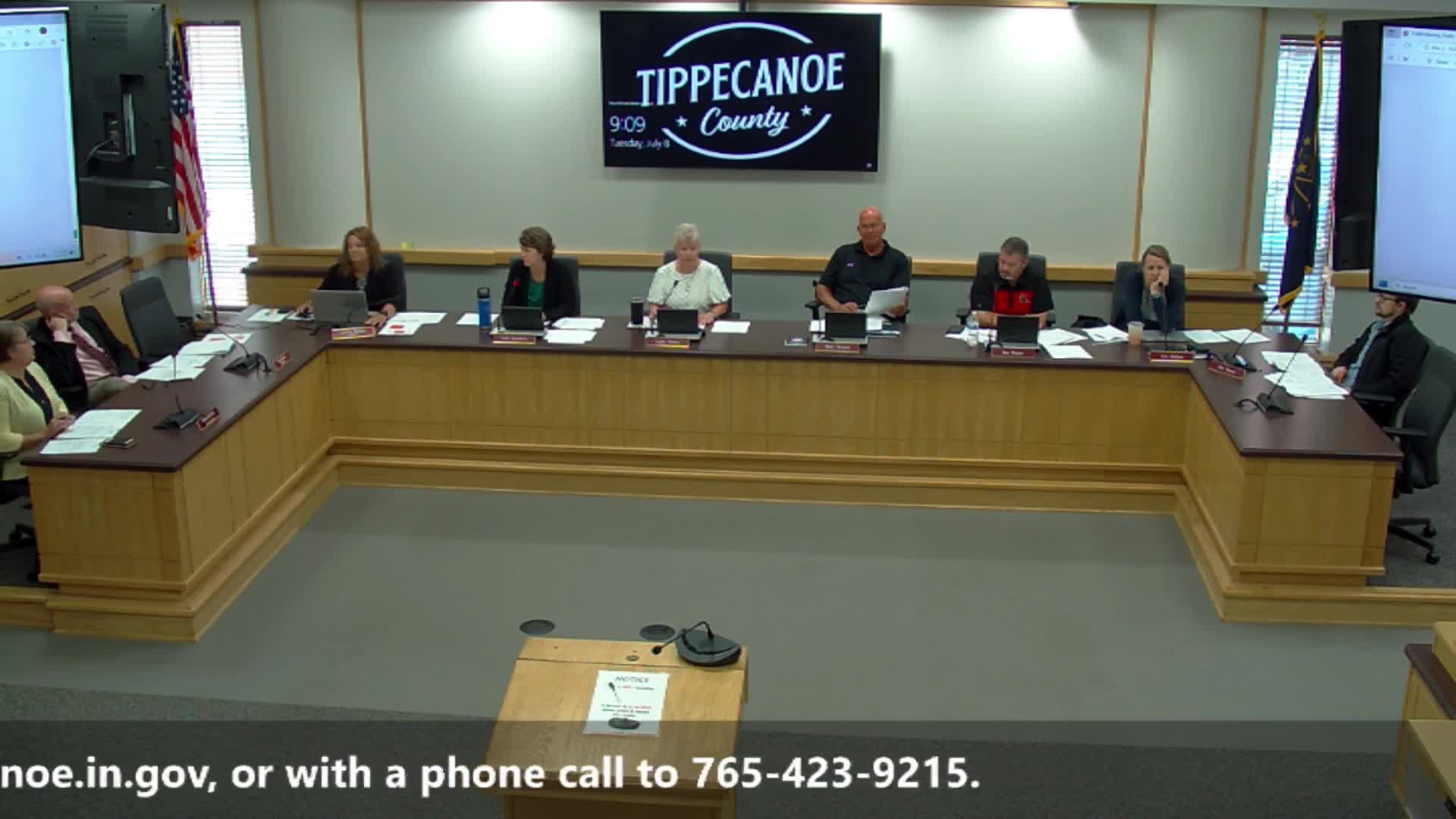Tippecanoe County Council considers public safety tax resolution amid budget challenges
July 08, 2025 | Tippecanoe County, Indiana
This article was created by AI summarizing key points discussed. AI makes mistakes, so for full details and context, please refer to the video of the full meeting. Please report any errors so we can fix them. Report an error »

In a recent meeting of the Tippecanoe County Council, discussions centered around the potential introduction of a resolution concerning public safety funding, highlighting the complexities of local governance and fiscal planning. The council is considering a proposal that could significantly impact funding allocations for public safety across various townships, including Wabash, Tippecanoe, and Wea.
The meeting revealed that the council must navigate a delicate balance between immediate funding needs and future fiscal responsibilities. A key point of contention was whether to approve a $600,000 allocation to Wabash Township, which would set a precedent for future funding requests from other townships. Council members expressed differing opinions on the urgency of the proposal, with some advocating for immediate action while others urged caution due to upcoming changes in state legislation that could affect local tax revenues.
One council member presented detailed calculations showing the potential financial impact on various entities if the resolution were approved. For instance, Tippecanoe County could see a reduction of $278,000 in public safety funding, while Lafayette and West Lafayette would face similar cuts. This data underscores the interconnectedness of funding decisions and their implications for community safety services.
The discussion also touched on the possibility of adjusting the local income tax rate to mitigate funding losses. A proposed increase of one cent could cover most of the anticipated shortfall, costing an average household approximately $10 annually. However, council members acknowledged the challenges of raising taxes, especially in light of existing budgetary commitments and the need for careful planning.
As the council deliberated, it became clear that many members were hesitant to move forward without a clearer understanding of the financial landscape in the coming years. The looming changes from Senate Bill 1, which will alter the public safety funding structure, added to the uncertainty. Some council members suggested that a more comprehensive plan could be developed in the next year, allowing for a more informed decision-making process.
Ultimately, the council decided to postpone a vote on the resolution, opting instead to gather more information and consider the implications of their choices. This decision reflects a cautious approach to governance, prioritizing long-term planning over immediate action. As the community continues to grow, the council's ability to adapt to changing needs and funding structures will be crucial in ensuring the safety and well-being of its residents.
The meeting revealed that the council must navigate a delicate balance between immediate funding needs and future fiscal responsibilities. A key point of contention was whether to approve a $600,000 allocation to Wabash Township, which would set a precedent for future funding requests from other townships. Council members expressed differing opinions on the urgency of the proposal, with some advocating for immediate action while others urged caution due to upcoming changes in state legislation that could affect local tax revenues.
One council member presented detailed calculations showing the potential financial impact on various entities if the resolution were approved. For instance, Tippecanoe County could see a reduction of $278,000 in public safety funding, while Lafayette and West Lafayette would face similar cuts. This data underscores the interconnectedness of funding decisions and their implications for community safety services.
The discussion also touched on the possibility of adjusting the local income tax rate to mitigate funding losses. A proposed increase of one cent could cover most of the anticipated shortfall, costing an average household approximately $10 annually. However, council members acknowledged the challenges of raising taxes, especially in light of existing budgetary commitments and the need for careful planning.
As the council deliberated, it became clear that many members were hesitant to move forward without a clearer understanding of the financial landscape in the coming years. The looming changes from Senate Bill 1, which will alter the public safety funding structure, added to the uncertainty. Some council members suggested that a more comprehensive plan could be developed in the next year, allowing for a more informed decision-making process.
Ultimately, the council decided to postpone a vote on the resolution, opting instead to gather more information and consider the implications of their choices. This decision reflects a cautious approach to governance, prioritizing long-term planning over immediate action. As the community continues to grow, the council's ability to adapt to changing needs and funding structures will be crucial in ensuring the safety and well-being of its residents.
View full meeting
This article is based on a recent meeting—watch the full video and explore the complete transcript for deeper insights into the discussion.
View full meeting
